#roman amphorae
Explore tagged Tumblr posts
Text




A few different roman amphorae related with the ancient town of Balsa (actual Torre d'Aires, on the outskirts of the city of Tavira).
The first one (first and second photos) is a baetica (Andalusian) amphora from the I Century CE. This recipient was used to transport garum (a fermented fish sauce whose production was one of the most important economic activities of Balsa; the garum balsenses was exported to the entire western Roman Empire, where it was widely appreciated).
The second amphora (first and third photos) was manufactured in the south of the roman province of Lusitania (Portugal) in the IV or V Century, and it was also used to transport fermented fish sauces.
The third roman amphora (fourth photo) is from the I Century BC, and it was produced in the Italian Peninsula. This ceramic piece was rescued from a shipwreck on the Barrel Beach, not far away from the ancient town of Balsa. Unlike the other two, this amphora was used to transport wine.
#Exposition “Balsa Roman town"#Exposição “Balsa cidade romana”#Roman Period#Período Romano#Palácio da Galeria#Gallery Palace#Tavira#amphorae#roman amphorae#photographers on tumblr#Balsa#algarve#portugal#original photos#photography
7 notes
·
View notes
Text

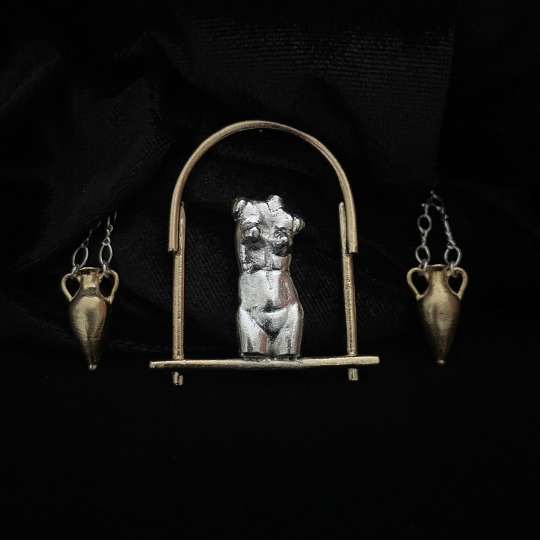
Exhibition necklace and amphora earrings by Moon and Serpent
#moon and serpent#handmade jewelry#architectural#sculptural#mythology#archaeology#greek goddess#roman statue#amphora#earrings#necklaces
299 notes
·
View notes
Text
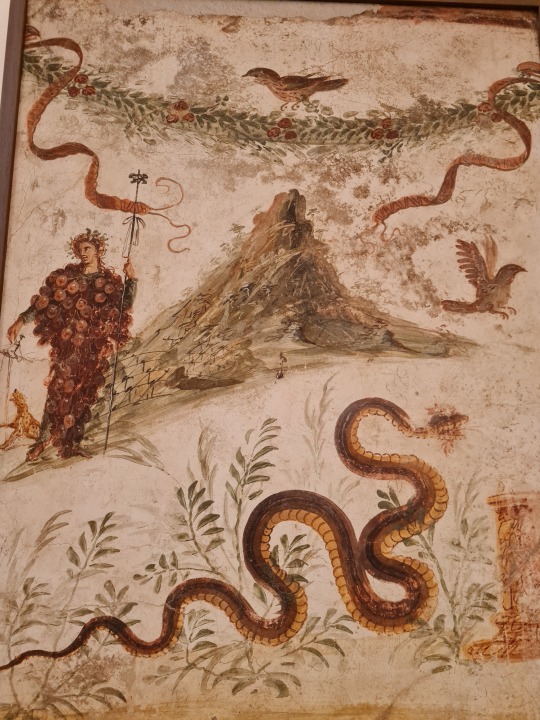
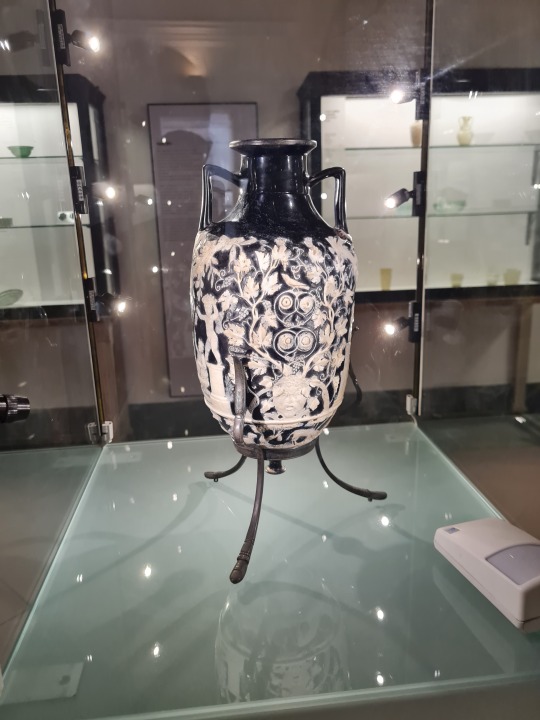
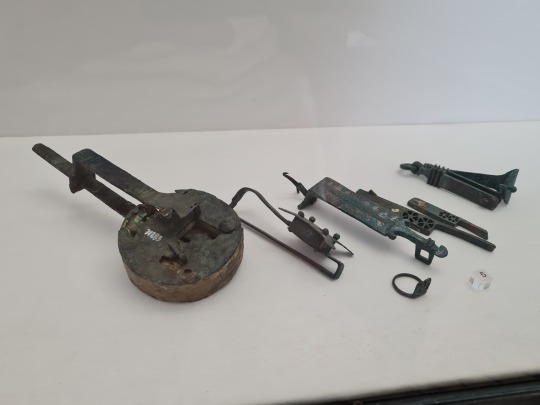

Artifacts of Pompeii, in Museo Archeologico Nazionale di Napoli
1. Fresco of Bacchus and Mount Vesuvius. 2. Roman amphora with cupids and Dionysian harvesting. 3. Roman padlock, fibula and other tools. 4. Fresco of Serapis between two cobras, from the Temple of Isis.
#pompeii#ancient history#roman art#antiquity#ancient art#ancient rome#archeology#roman empire#napoli#naples#italy#italia#italytravel#art history#history#museum#fresco painting#ancient#amphora#bacchus#dionysos#egyptian gods#gods#mythology#greek mythology#roman mythology#museum photography#art museum#travel#travel photography
72 notes
·
View notes
Text

APULIAN RED-FIGURE DECORATED AMPHORA Ca. 4th century BC.
Magna Graecia L:305mm / W:140mm ; 805g.
#APULIAN RED-FIGURE DECORATED AMPHORA#Ca. 4th century BC#Magna Graecia#pottery#ancient pottery#ancient artifacts#archeology#archeolgst#history#history news#ancient history#ancient culture#ancient civilizations#roman history#roman empire#roman art
255 notes
·
View notes
Text

Roman era amphoras in the Museum of Vienne, Dauphiné region of France
French vintage postcard
#france#amphoras#postal#sepia#ephemera#briefkaart#french#the museum of vienne#photo#photography#historic#postcard#vienne#museum#dauphiné#vintage#postkaart#dauphin#tarjeta#region#carte postale#postkarte#ansichtskarte#roman
19 notes
·
View notes
Text
Excerpt:
After decades of excavations in Italy, archaeologists have discovered a villa that could have belonged to Augustus, the first emperor of Rome.
Since 2002, researchers from the University of Tokyo have been exploring Somma Vesuviana, an archaeological site north of Mount Vesuvius, the volcano that extinguished the ancient city of Pompeii in 79 C.E. Recently, these excavations revealed a structure destroyed by the same eruption.
Researchers think this site could be Augustus’ lost villa. According to the team, Roman sources say Augustus died in a villa north of the mountain in 14 C.E., but the building’s location has never been verified.
“There is a description that [the villa] was consecrated … but its existence has not been identified to this day,” says Mariko Muramatsu, leader of the university’s Somma Vesuviana excavation project, in a translated statement. “In recent years, our excavations have uncovered parts of buildings that were buried during the eruption of Mount Vesuvius in 79 C.E. This means that for the first time in this area, a building contemporary with the villa of Emperor Augustus has been found with scientific support.”
/endquote
#smithsonian#augustus#emperor augustus#villa#ancient villa#roman emperors#university of tokyo#classical#classical antiquity#classical studies#archaeology#archaeological site#archaeological discoveries#somma vesuviana#excavation#amphora#amphorae#history
4 notes
·
View notes
Text
Wheeler was holding a fragment of a Roman wine jar dug up at Arikamedu (Pondicherry), eighty miles down the coast. He took the overnight train and after a long, alcoholic breakfast at the town's French legation, went looking for Romans.
An inner room of the public library contained three or four museum cases. I strode hopefully forward, and, removing the dust with an excessively sweaty arm, peered into them. For the second time within the month, my eyes started in their sockets. Crowded together were fragments of a dozen more Roman amphorae [wine jars], part of a Roman lamp, a Roman intaglio [cameo brooch], a mass of Indian material – potsherds, beads, terracottas – and several fragments of a red-glazed ware no one trained in the school of classical archaeology could mistake.
"Why the West Rules – For Now: The patterns of history and what they reveal about the future" - Ian Morris
#book quotes#why the west rules – for now#ian morris#nonfiction#mortimer wheeler#archaeology#pottery#fragment#roman#india#wine jar#amphora#lamp#intaglio#cameo brooch#potsherd#bead#terracotta#arikamedu#pondicherry#overnight train
0 notes
Text
The Bou Ferrer wreck: a shipwreck in Nero's time.
El pecio Bou Ferrer: un naufragio en la época de Nerón.
(English / Español)
In 1999, two sport divers, José Bou and Antoine Ferrer, found the remains of a Roman merchant ship, loaded with thousands of amphorae, which sank off the coast of the Alicante town of Villajoyosa (Spain) sometime in the 1st century.
In April 2000, Bou and Ferrer communicated their discovery to the Villajoyosa Municipal Museum and handed over the photographs they had taken. The museum informed the Centre for Underwater Archaeology of the Valencian Community, which took action and in January 2001 commissioned archaeologists Carlos de Juan and Gustavo Vivar to go to the site with the discoverers; but when Bou and Ferrer dived they saw immediately that it was not in the same state. Undoubtedly, word of the discovery had spread and in the previous months other divers had stolen a large number of amphorae. The archaeologists were alarmed and realised that if the plundering was not stopped, the site would soon disappear.
In May 2001, a protection project was launched, which foresaw the placement of a structure over the amphorae cargo. In 2006, a team led by Carlos de Juan and Franca Cibecchini undertook excavations on the wreck, which was named after its discoverers: Bou Ferrer.
The archaeologists found that it was a Roman ship of some thirty metres in length, making it the largest Roman ship excavated in the Mediterranean.The ship was carrying an enormous cargo of amphorae, of which around three thousand have been found to date. Each one contained 40 kilos of fish sauce made from anchovies, mackerel and horse mackerel (garum).
The amphorae were placed in the hold of the ship between vine shoots for protection during transport. Twelve lead ingots from Sierra Morena, weighing 64 kilos each, with the countermark "Emperor Augustus Germanicus" were found on both sides of the overpack, so archaeologists have been able to date the wreck to the 1st century AD. The wood of the ship was also in an excellent state of preservation, which has allowed them to study its construction technique.
A study published in 2014 concluded that the ship was built in a shipyard in the area of Neapolis (present-day Naples). It is even possible to reconstruct quite reliably the story of the shipwreck of the Bou Ferrer.The ship set sail in the mid-1st century from a port near Cadiz, possibly bound for Rome or Narbonne, with its valuable cargo of amphorae and ingots.
Perhaps in its transit to the Balearic Islands it had problems and, in an attempt to save itself, the crew made a manoeuvre to approach the coast downwind. But the attempt was unsuccessful and the heavy Roman merchant ship was wrecked barely a thousand metres from the coast, where it has lain undisturbed for almost two millennia.
------------------------------------------------------------------------------
En 1999, dos buceadores deportivos, José Bou y Antoine Ferrer, hallaron los restos de un navío mercante romano, cargado con miles de ánforas, que se hundió en las costas de la localidad alicantina de Villajoyosa en algún momento del siglo I.
En abril del año 2000, Bou y Ferrer comunicaron su descubrimiento al Museo Municipal de Villajoyosa y entregaron las fotografías que habían realizado. El museo informó al Centro de Arqueología Subacuática de la Comunidad Valenciana, que tomó cartas en el asunto y en enero de 2001 encargó a los arqueólogos Carlos de Juan y Gustavo Vivar que acudiesen al enclave con los descubridores; pero cuando Bou y Ferrer se sumergieron vieron enseguida que no se hallaba en el mismo estado. Sin duda, se había difundido la voz del hallazgo y en los meses anteriores otros buceadores habían sustraído un gran número de ánforas. Los arqueólogos, alarmados, cobraron conciencia de que si no se ponía freno al expolio el yacimiento desaparecería en poco tiempo.
En mayo de 2001 se puso en marcha un proyecto de protección que preveía la colocación de una estructura sobre el cargamento de ánforas. En 2006, un equipo dirigido por Carlos de Juan y Franca Cibecchini emprendió las excavaciones en el pecio, que recibió el nombre de sus descubridores: Bou Ferrer.
Los arqueólogos constataron que se trataba de una nave romana de unos treinta metros de eslora, lo que la convertía en el mayor barco romano en excavación de todo el Mediterráneo. El navío llevaba un enorme cargamento de ánforas, de las que hasta la fecha se han localizado unas tres mil. Cada una contenía 40 kilos de salsa de pescado elaborada con boquerón, caballa y jurel (garum).
Las ánforas fueron colocadas en la bodega del navío entre sarmientos de vid para su protección durante el transporte. A ambos lados de la sobrequilla se localizaron doce lingotes de plomo de sierra Morena, de 64 kilos cada uno, con la contramarca "Emperador Germánico Augusto", por lo que los arqueólogos han podido datar el pecio en el siglo I d.C. También la madera del barco se hallaba en un excelente estado de conservación, lo que ha permitido estudiar su técnica constructiva.
En un estudio publicado en 2014 se llegó a la conclusión de que el navío se construyó en algún astillero de la zona de Neápolis (la actual Nápoles). Es posible incluso reconstruir de modo bastante fiable la historia del naufragio del Bou Ferrer. El navío zarpó a mediados del siglo I de algún puerto cerca de Cádiz, con destino posiblemente a Roma o a Narbona, con su valioso cargamento de ánforas y lingotes.
Tal vez en su tránsito hacia las Baleares tuvo problemas y, en un intento por salvarse, la tripulación hizo una maniobra de aproximación a la costa a favor del viento. Pero la tentativa resultó fallida y el pesado barco mercante romano naufragó a escasos mil metros de la costa, donde ha yacido imperturbado durante casi dos milenios.
Fuente texto: historia.nationalgeographic.com.es
Video: Universidad de Alicante
#roman ship#1st century#shipwreck#amphorae#ánforas#bou ferrer#naufragios#pecio romano#s. 1 d.C.#wreck
1 note
·
View note
Text
Roman shipwreck amphora, Type Dressel 1B

ITEM Shipwreck amphora, Type Dressel 1B MATERIAL Pottery CULTURE Roman, Republican period PERIOD 2nd – 1st Century B.C DIMENSIONS 110 cm x 29 cm (without stand), 117 cm x 29 cm (with stand) CONDITION Good condition. Small restorations in the handles and a crack in the lower part of the piece, the crack is superficial, the piece is not damaged inside and its condition is not in danger. See pictures. Includes stand PROVENANCE Ex Belgian private collection, S., Ghent, Ex C. Varosi Gallery, Brussels (1999) Roman amphoras of the Dressel 1 type represent a significant archaeological find that sheds light on ancient Roman trade and transportation practices. Named after the German archaeologist Heinrich Dressel, who first categorized them in the late 19th century, Dressel 1 amphoras were widely used for the storage and transportation of goods throughout the Roman Empire, particularly during the 1st century BCE and the early 1st century CE. Characterized by their distinctive shape and design, Dressel 1 amphoras typically feature a long, cylindrical body with a pointed or rounded bottom, a narrow neck, and two small handles positioned near the neck. They were primarily used for the transport of liquid goods such as wine, olive oil, and fish sauce, although they were occasionally employed for solid commodities as well. The capacity of Dressel 1 amphoras varied, but they typically held between 20 to 30 liters of liquid. Archaeological Read the full article
#ancient#ancientart#ancienthistory#artefact#artifact#ancientartifacts#antiquities#antiquity#art#artobject#ancientrome#ancientworld#history#classical#archaeology#roman#shipwreck#amphora#dressel#vessel#pottery
0 notes
Text

⚠️ THIS IS NOT A DEROGATORY POST ⚠️ I THINK THE HOUSES SLAY NOT IN SPITE OF ("but [...] still") LOOKING LIKE RECONSTRUCTED ROMAN NECROPOLIS SEPULCHRES BUT BECAUSE OF IT ⚠️ I LIKE THEM EVEN MORE NOW THAT I HAVE MADE THIS CONNECTION IN MY HEAD ⚠️ buried 1st century BCE to 4th century CE roman necropolis under Basilica of Saint Peter in the Vatican you will always be famous




now why are the p2 houses giving vatican Via Triumphalis 1st century BCE to 4th century CE reconstructed roman necropolis lowkey
#caps + big font + emojis for comedic effect by the way I AM NOT MAD EMOJI WARNING I AM NOT MAD i'm hashtag passionate.#buried roman necropolis under saint pierre au vatican you will always be famous#it genuinely pains and maddens me i'll never be able to walk down the aisles of a late pagan/early christian roman necropolis#like werewolf_tearing_shirt_off.png that i won't be able to witness the mosaics & the colors & statues & the libations poured in amphorae
93 notes
·
View notes
Text

In 2018, archaeologists unearthed a soapstone vessel beneath an abandoned theater, revealing a treasure trove of hundreds of 5th-century AD gold Roman coins speculated to be worth millions of euros. Discovered during renovations of the Cressoni theater, the coins were neatly stacked in a Roman-era amphora, shedding light on a turbulent period in Italian history likely hidden during the collapse of the Western Roman Empire.
197 notes
·
View notes
Text


Amphora by Moon and Serpent
#moon and serpent#handmade jewelry#support artists#amphora#antique#ancient#greek goddess#greek mythology#roman history#ancient rome#ancient greece#earrings#necklaces#pendants#gift#archaeology#artisanal
487 notes
·
View notes
Note
A question about visual arts this time
Do you have any favorite classics artwork(s) that is Iliad related? Like ancient potteries of Homeric heroes, mural arts, paintings during the medieval Europe, etc?
Oh my that is a very good question! There are so many pottery painting and murals of later years that portray so greatly the epic cycle that is so hard to choose!!! But I believe one of the old masters is definitely Exekias! As you remember from my small analysis on the preparation of Ajax suicide. He creates some amazing pasterpieces with the Iliad protagonists and he is very detailed in his style. See for example the famous depiction of Ajax and Achilles playing a board game:
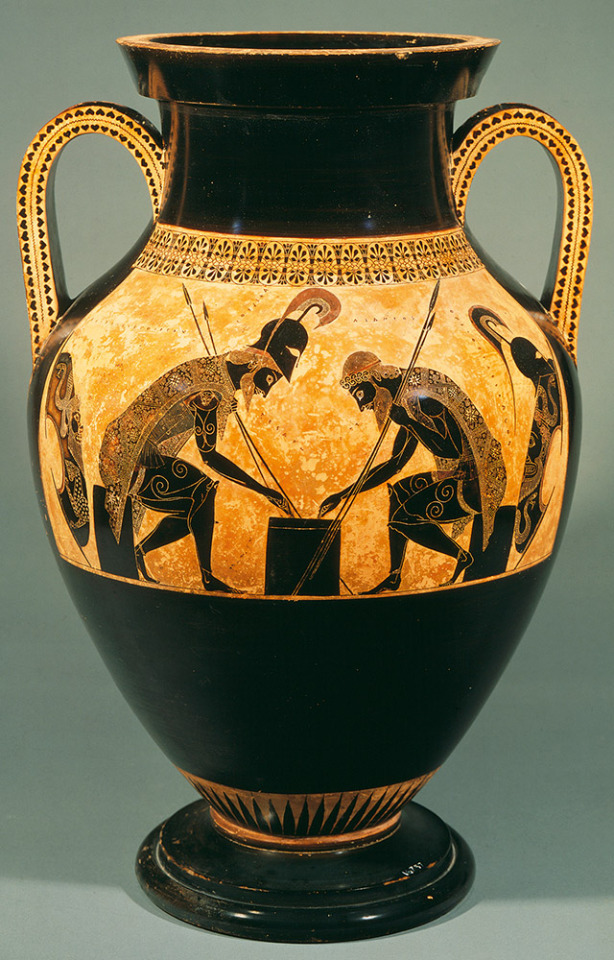
His lines are very bold and his work is very detailed and not only that he includes even thematics that are lesser known such as the preparation of the suicide instead of the act itself or this board game that ellegedly happened in the middle of a battle. Of course we also have the so-called "Siren Painter" with the amazing depiction of Odysseus resisting the sirens songs from the Odyssey
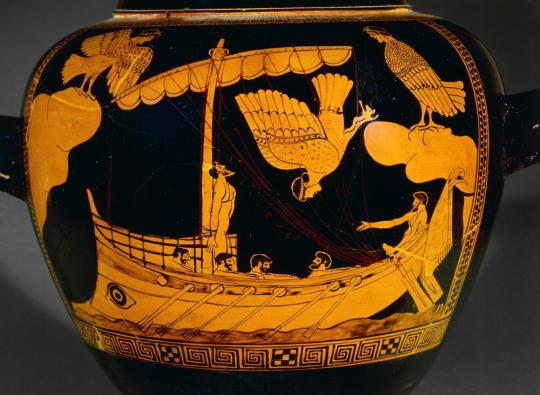
But to focus more on Iliad as you requested (or the general aspects of the war) One of my favorites is definitely this Kylix that was drawn by a painter named Douris. here's an image of Odysseus approaching mourning Achilles (his arms are hanging from a wall which is a very interesting detail)

This Kylix involves the sharing of the arms of Achilles and the medalion in the middle depicts Odysseus handing over to Neoptolemous the arms of his father while holding a boetian-style shield instead of the well known shield of the homeric poems (and it is interesting given how most Neoptolemous depictions involve him killing Priam -he seems so innocent here doesn't he?!-):
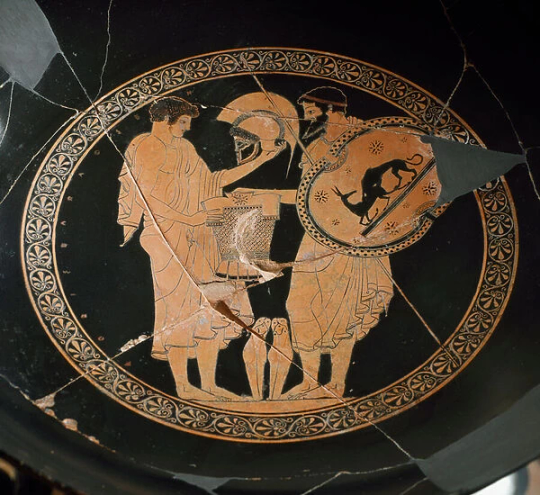
A roman wallpainting from Pompeii is definitely one of my favorite Patroclus representations along with of course the infamous scene with him being taken care of by Achilles in a Kyllix

The fight over the body of patroclus in the black-figure style is also amazingly expressive:

The Berlin Painter has definitely one of the most expressive depictions of the battle between Achilles and Hector:
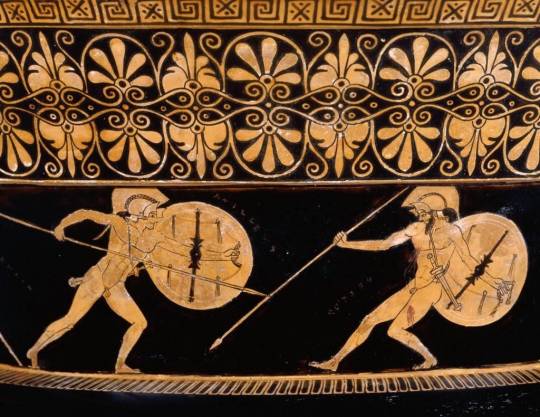
This depiction is around the neck of a crater, the figures are named and I loved how Hector is bleeding profoundly while untouched Achilles is going for the kil with his spear. Euphronius painter also has a very brutal scene of Achilles slaying Troilus:
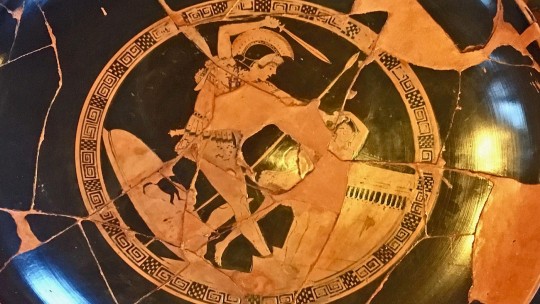
An Amphora mostly black but for one red figure seems to be depicting Antilochus and is a really rare one from one I can tell!
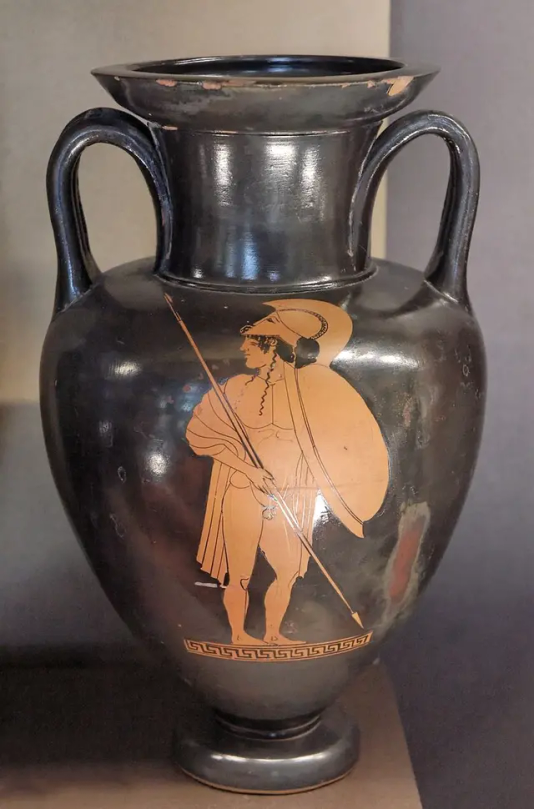
I love how his long, wavy hair is arranged under the helmet and his obviously youthful appearance (he is a great source of inspiration for my Achilles and Antilochus story). I also love the Triptolemous Painter for making this depiction of the council of Achilles:


Not only do I love the cheeky pose Odysseus has; trying to transfer his ature through painting! Not only do we again see the arms of Achilles to the walls but also we have old Phoenix to the background with his hair tonred up with white color (thankfully rescued by passage of time) with his long hair thugged with the hair band and all!
Kleophades Painter has one of the most brutal scenes of the murder of Priam I have ever seen!
This seems to follow the line of the myth that Virgil speaks of in Aenead; Neoptolemus kills Astyanax before his grandrather before killing him too. In here he seems to have laid the dead baby to his knees and almost seems like either repeatedly stabbing him or beating him to death while Priam tries to shield his head. The baby also seems to have been repeatedly stabbed as well! And blood splattered everywhere!
For Diomedes this is definitely one of my favorites; the stealing of the horses with Odysseus

One can see his youthful appearance compared to Odysseus as they drive the horses away or the exchange of the weapons with Glaukus
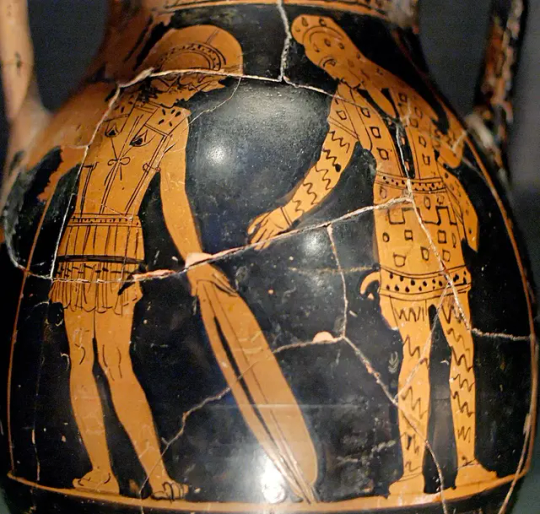
I love his youthful appearnce and the thin features and yet the stout body to show his warrior status and the way he receives the shield with care in this, shows much on his personality really.
*
Oh there are so many different depictions by ancient art alone! I would be more than happy to elaborate further with specific images on specific heroes if you want on future reblogs because honestly the category is huge! Even scenes like geometric time paintings seem to be quoting Homer and either the funeral of Patroclus or Hector:

Thank you for the intriguing question! Made me remember many of these masterpieces!
#ancient greece#ancient greek art#pottery#exekias#neoptolemous#neoptolemus#odysseus#priam#patroclus#achilles#hector#heroes of the trojan war#trojan war#iliad#the iliad#greek mythology#tagamemnon#homeric poems#greek art#ceramic art#wallpaintings#visual arts#art history#archeology#diomedes#katerinaaqu answers
108 notes
·
View notes
Text
I say my Rook is Lara Croft/Indiana Jones inspired, but really she’s based on an archeology professor I had in college. He specialized in underwater archeology and would have these fantastic adventures exploring ancient shipwrecks, which we could get him to go off on tangents about very easily. And he hated Indiana Jones. ‘He’s not a real archeologist!,’ he would say. ‘He doesn’t care about preserving history! He’s just a treasure hunter!’

I want to pick the Lords of Fortune or the Veiljumpers for my Rook’s background, to fit this whole Lara Croft/Indiana Jones/adventurous archeologist thing I’m imagining, but I want that Mourn Watch armor. It looks like an ancient tomb. I love it.
#i wonder what that professor is doing now#he was such a cool guy#we’d get him off topic from the lecture and he would just tell us stories about his adventures#one time they spent hours gently coaxing an octopus out of a roman amphora from an ancient shipwreck
10 notes
·
View notes
Text
Roman Wreck

This roman merchant wreck from the 3rd century AD that sank off the coast of Marausa, Sicily has now been salvaged in its entirety. The wreck which is called Marausa II is in very good condition and about 12 metres long and 4 metres wide. Even the cargo, consisting of various amphorae, could be salvaged, including some very rare and unique objects found. However, the archaeologists have not yet said what they found.
The wreck itself is now to be conserved and restored in the Baglio Anselmi Archaeological Museum for public viewing and will later be exhibited alongside the other wreck, Masaura I.
#naval history#shipwreck#masaura II#3rd century ad#roman#ancient seafaring#underwater archaeology#italy
332 notes
·
View notes
Text
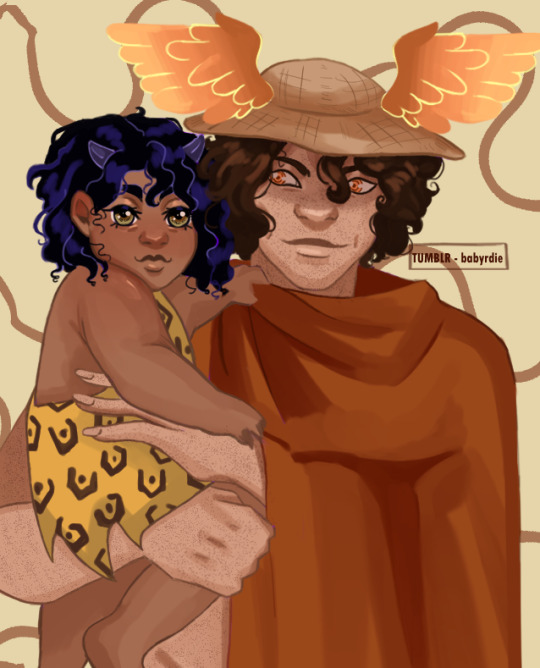
More Hermes here.
Based on the myth in which Zeus gives baby Dionysus to Hermes. Apparently, this event fits into one of those types of common myths, because surprisingly it has several sources and versions and is even an element also present in Roman mythology. I don't know why, but I didn't expect it to have as many variants as I found (or, at least, that such variants had come to us in such numbers), although I knew there was a famous statue showing this (and I discovered there was an amphora also). Anyway, I'm not basing it on any specific version, just the basic idea of Hermes having a role in being temporarily responsible for Dionysus.
Dionysus's design has already been explained previously, I just made him a baby. As a result, the horns are smaller and there is less detail. Maybe the next time I make him an adult his design will change, but it wasn't this time since he's a baby here.
As for Hermes, I used the idea of the winged petasus since it's a typical symbol of his and in this drawing you can't see it, but I will probably also keep the wings on his feet. I checked amphorae that had Hermes on them and noticed that it's common for him to be portrayed wearing a chlamys as it's an outfit often worn by travelers, so I drew him wearing one too. Like Dionysus, Hermes is both represented in a younger form (without a beard) and in an older form (with a beard). I decided to go with the younger version, because my first contact with him in ancient sources was when I read Homer and Homer described him like that, so that was the image I had of Hermes. In this drawing you can't see it because of the clothes, but I usually draw the body in the sketch before covering it and for Hermes I used Olympic runners as a reference to get an idea of a physique associated with speed.
149 notes
·
View notes